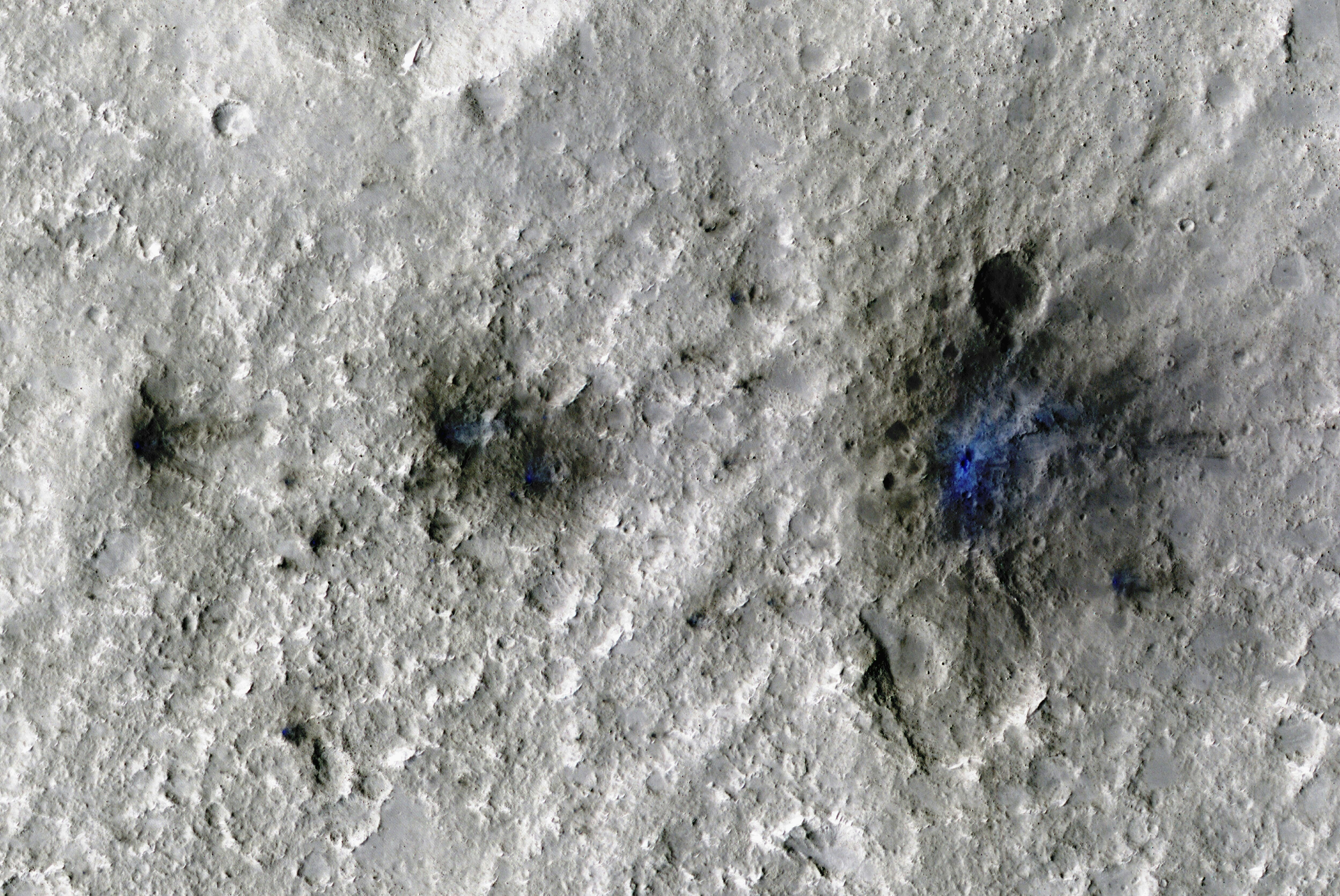
Basketball-sized meteorites crash into Mars on a daily basis, and they really shake things up.
Among the more than 1300 Marsquakes that NASA’s InSight lander recorded during its time on Mars, 86 of them turn out to be not the restless stretching and settling of the planet itself, but the sudden impact of fast-moving meteors slamming into the Martian ground. If planetary scientists are right, Mars gets pummeled by space rocks five times more often than anyone previously suspected.
ETH Zurich planetary scientist Geraldine Zenhäusern and her colleagues published their work in the journal Nature Astronomy.
Marsquakes and Meteors
Just before a handful of Marsquakes, InSight caught sound waves from the meteors’ fall through the thin Martian atmosphere — or, more technically, InSight measured how those sound waves in the lower layers of air pushed and pulled against the ground below. And the impact quakes themselves were short, sharp bursts of motion, less than a quarter second on average. A normal Marsquake, on the other hand, can last several seconds.
When Zenhäusern and her colleagues combed through the rest of InSight’s data, they found 80 more of these jarring fraction-of-a-second quakes, triggered by the high-velocity impact of space rocks. Assuming the area within range of InSight’s sensors is normal, that means basketball-sized chunks of rock slam into Mars at high speed, digging craters at least 25 feet wide, between 280 and 360 times a year. And even larger meteorites, big enough to dig craters almost 100 feet wide, crash down somewhere on the planet about once a month.
It turns out we may have been underestimating how often Mars gets smacked by a flying space rock. Planetary scientists use spacecraft like the Mars Reconnaissance Orbiter to count the number of craters on a planet’s surface, but it’s easy to miss a relatively piddly 25-foot crater, especially amid rough terrain.
“While new craters can best be seen on flat and dusty terrain, where they really stand out, this type of terrain covers less than half of the surface of Mars,” says Zenhäusern in a recent statement. “The sensitive InSight seismometer, however, could hear every single impact within the lander’s range.”
Watch Out for Falling Rocks
In 2022, a team of planetary scientists led by University of Toulouse planetary scientist Raphael Garcia (and also included several of the authors of the current study) used InSight’s seismic data to pinpoint the locations of three relatively small meteor impacts — then checked out the locations with MRO and found fresh craters. It was the first time anyone had traced seismic waves back to an impact crater on another planet — and it’s something we’ve only been able to do once here on Earth. Zenhäusern was a co-author of that study, and so were several of the other researchers involved in this latest work.
Geologists rely on seismic waves moving through rock to reveal underground features like fault lines, magma chambers, and buried rock formations. On Earth, networks of seismometers around the world give geologists a high-resolution map of what's beneath the surface. On Mars, there was mostly just InSight, so knowing the exact location of that handful of impacts made it easier for Garcia and his colleagues to map some of Mars' underground structure, using the seismic waves from those impacts.
That kind of information could help not only understand Mars’s 4-billion-year history, but plan where to send future missions to the arid but possibly-once-inhabited planet. And risk management is another key part of planning future missions. So far, our presence on Mars has been sparse enough that meteor strikes haven’t been an issue as the odds have been in our favor. But that may change. And when it does, mission planners need to know how often to expect a meteor strike that could damage equipment or put crews at risk, and they need to know if some areas of the planet are more vulnerable than others.







